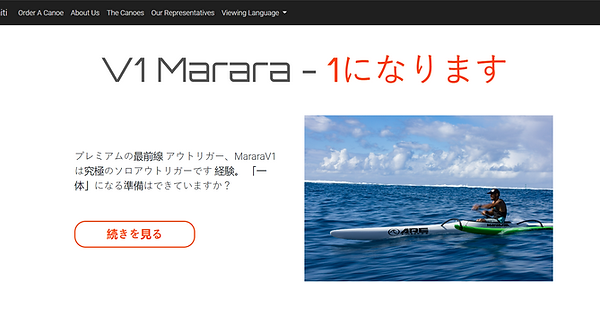
Redesigning ARE Tahiti's Website
Although I love to code, sometimes being inside on the internet all the time gets to be a bit much and I need to go outside and get some fresh air. So whenever I get the itch, I love to go out on the water and do some outrigger canoe paddling. One of my friends works as a representative for a company building canoes in Tahiti. He knew I built websites and asked if I wanted to redesign the companies website. I jumped at the opportunity to mix paddling and coding and go right to work. This is what I built:
If you want to checkout the menu for yourself, here are the links to the Github repository as well as the actual webpage (coming soon):
How It's Built
To begin the process, I started by communicating with my client to establish their goals for the new site. Their main objective was build a cleaner, more modern looking website that would load quickly on all devices. Other than that, I was allowed to take as much creative liberty as I liked. With that in mind, I got to work building some prototypes in Adobe XD. This allowed me to finalize the design with the client before I actually started building the site.
.png)
Once I had my design finalized, I started coding. I chose to develop the site's back end in Django, since I wanted to use the built in SQLite interface to allow the company to manage their inventory without using a third party system. I also wanted to write custom CSS for this site, so I spent a lot of time initially setting up all of my styles for my different elements.
_edited.jpg)
As I mentioned before, I wanted the inventory system for the boats to be run using Django's built in SQLite database and admin system. The built in tools made setting up the inventory a breeze and I was finished in no time at all. The other major features I built in was a language translation drop down menu and a JavaScript function to handle currency exchange rates. ARE Tahiti is an international company, so users from multiple different countries needed to be able to use the site
.png)
To handle translation, I setup a JavaScript function to turn on and off different divs containing the translations of the text in each language. I also stored the language setting in the session storage of the website so the user doesn't have to reset their viewing language when they switch pages. And finally, I used a free currency exchange rate API to calculate currency exchange for the different regions that the canoes are sold in.
Takeaways:
One of the big things this project taught me was the value of planning ahead. If I hadn't taken the time to communicate with the client, I probably would have spent a huge ammount of time and effort making small design changes that would have bogged down the design process.
I also learned how important it is to know how to find resources for what you're working on. Since I was working on this project alone, my Googling skills were really put to the test everytime I ran into and obstacle.